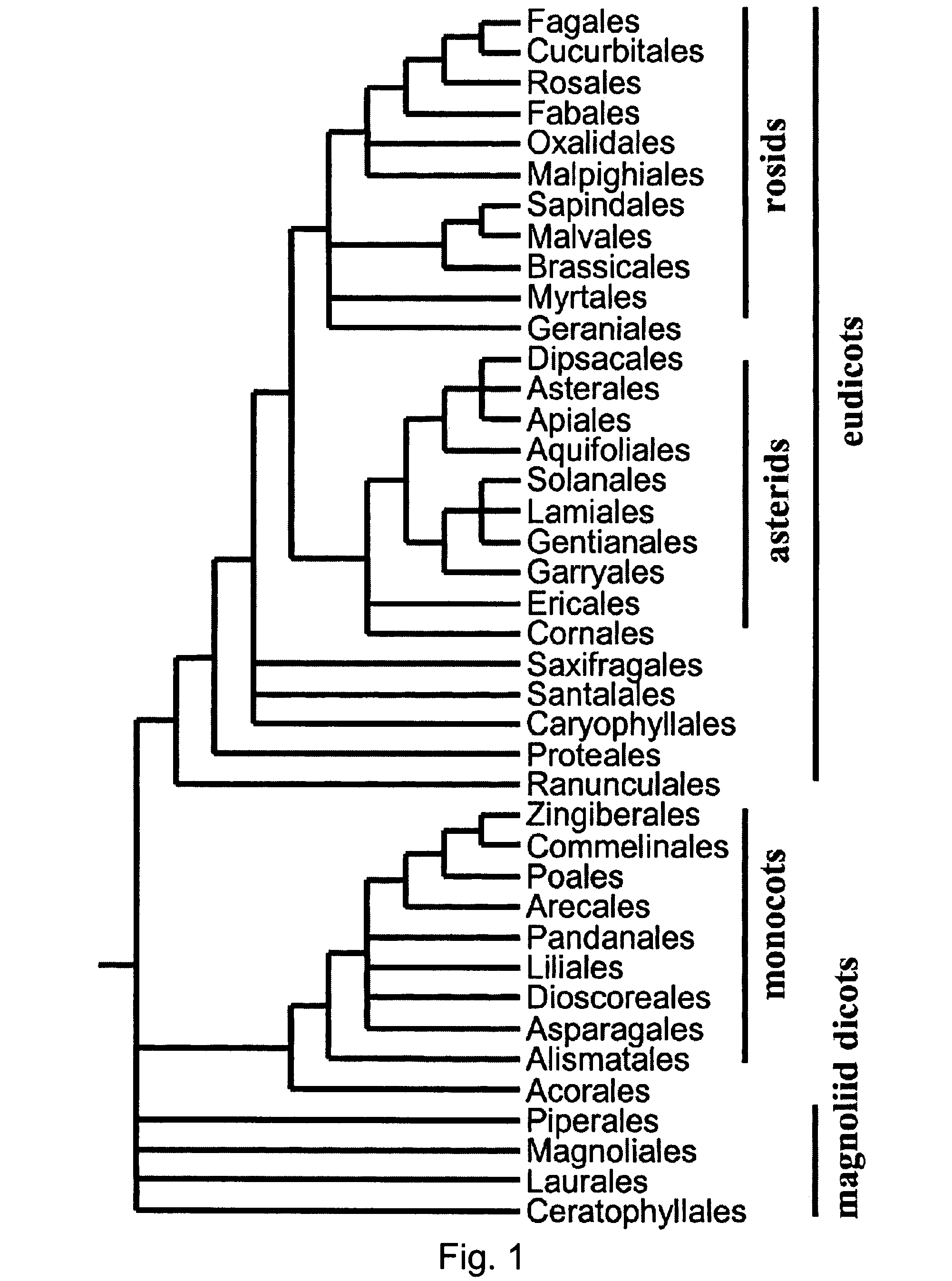Early flowering in genetically modified plants
a genetically modified plant and early flowering technology, applied in the field of early flowering in genetically modified plants, can solve the problems of shortening crop and tree breeding programs, limited breeding programs for the development of new varieties, and slow breeding of new varieties of plants with multi-year cycles, etc., to achieve the effect of modulating gene expression
- Summary
- Abstract
- Description
- Claims
- Application Information
AI Technical Summary
Benefits of technology
Problems solved by technology
Method used
Image
Examples
examples
[0151]It is to be understood that this invention is not limited to the particular devices, machines, materials and methods described. Although particular embodiments are described, equivalent embodiments may be used to practice the invention.
[0152]The invention, now being generally described, will be more readily understood by reference to the following examples, which are included merely for purposes of illustration of certain aspects and embodiments of the present invention and are not intended to limit the invention. It will be recognized by one of skill in the art that a polypeptide that is associated with a particular first trait may also be associated with at least one other, unrelated and inherent second trait which was not predicted by the first trait.
example i
Project Types and Vector and Cloning Information
[0153]A number of constructs were used to modulate the activity of sequences of the invention. An individual project was defined as the analysis of lines for a particular construct (for example, this might include plant lines that constitutively overexpress G482 or another subclade polypeptide). Generally, a full-length wild-type version of a gene or its cDNA was directly fused to a promoter that drove its expression in transgenic plants, except as noted in Table 1. Such a promoter could be the native promoter of that gene, or the CaMV 35S promoter which drives constitutive expression. Alternatively, a promoter that drives tissue specific or conditional expression could be used in similar studies. A direct fusion approach has the advantage of allowing for simple genetic analysis if a given promoter-polynucleotide line is to be crossed into different genetic backgrounds at a later date.
[0154]As an alternative to plant transformation wit...
example ii
Transformation
[0158]Transformation of Arabidopsis was performed by an Agrobacterium-mediated protocol based on the method of Bechtold and Pelletier, 1998. Unless otherwise specified, all experimental work was done using the Columbia ecotype.
[0159]Plant preparation. Arabidopsis seeds were sown on mesh covered pots. The seedlings were thinned so that 6-10 evenly spaced plants remained on each pot 10 days after planting. The primary bolts were cut off a week before transformation to break apical dominance and encourage auxiliary shoots to form. Transformation was typically performed at 4-5 weeks after sowing.
[0160]Bacterial culture preparation. Agrobacterium stocks were inoculated from single colony plates or from glycerol stocks and grown with the appropriate antibiotics and grown until saturation. On the morning of transformation, the saturated cultures were centrifuged and bacterial pellets were re-suspended in Infiltration Media (0.5×MS, 1× B5 Vitamins, 5% sucrose, 1 mg / ml benzylam...
PUM
| Property | Measurement | Unit |
|---|---|---|
| melting temperature | aaaaa | aaaaa |
| Tm | aaaaa | aaaaa |
| temperature | aaaaa | aaaaa |
Abstract
Description
Claims
Application Information
 Login to View More
Login to View More - R&D
- Intellectual Property
- Life Sciences
- Materials
- Tech Scout
- Unparalleled Data Quality
- Higher Quality Content
- 60% Fewer Hallucinations
Browse by: Latest US Patents, China's latest patents, Technical Efficacy Thesaurus, Application Domain, Technology Topic, Popular Technical Reports.
© 2025 PatSnap. All rights reserved.Legal|Privacy policy|Modern Slavery Act Transparency Statement|Sitemap|About US| Contact US: help@patsnap.com



